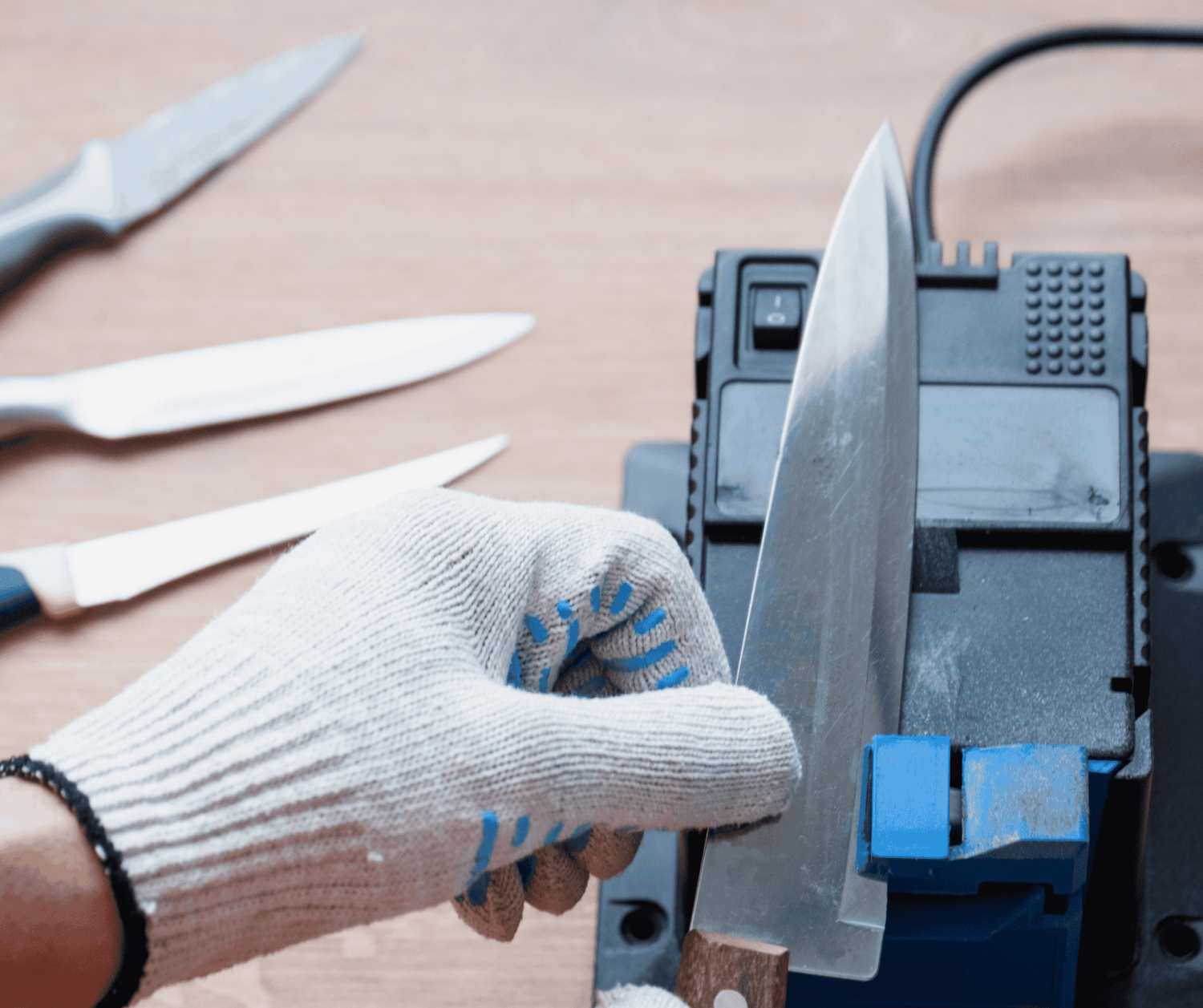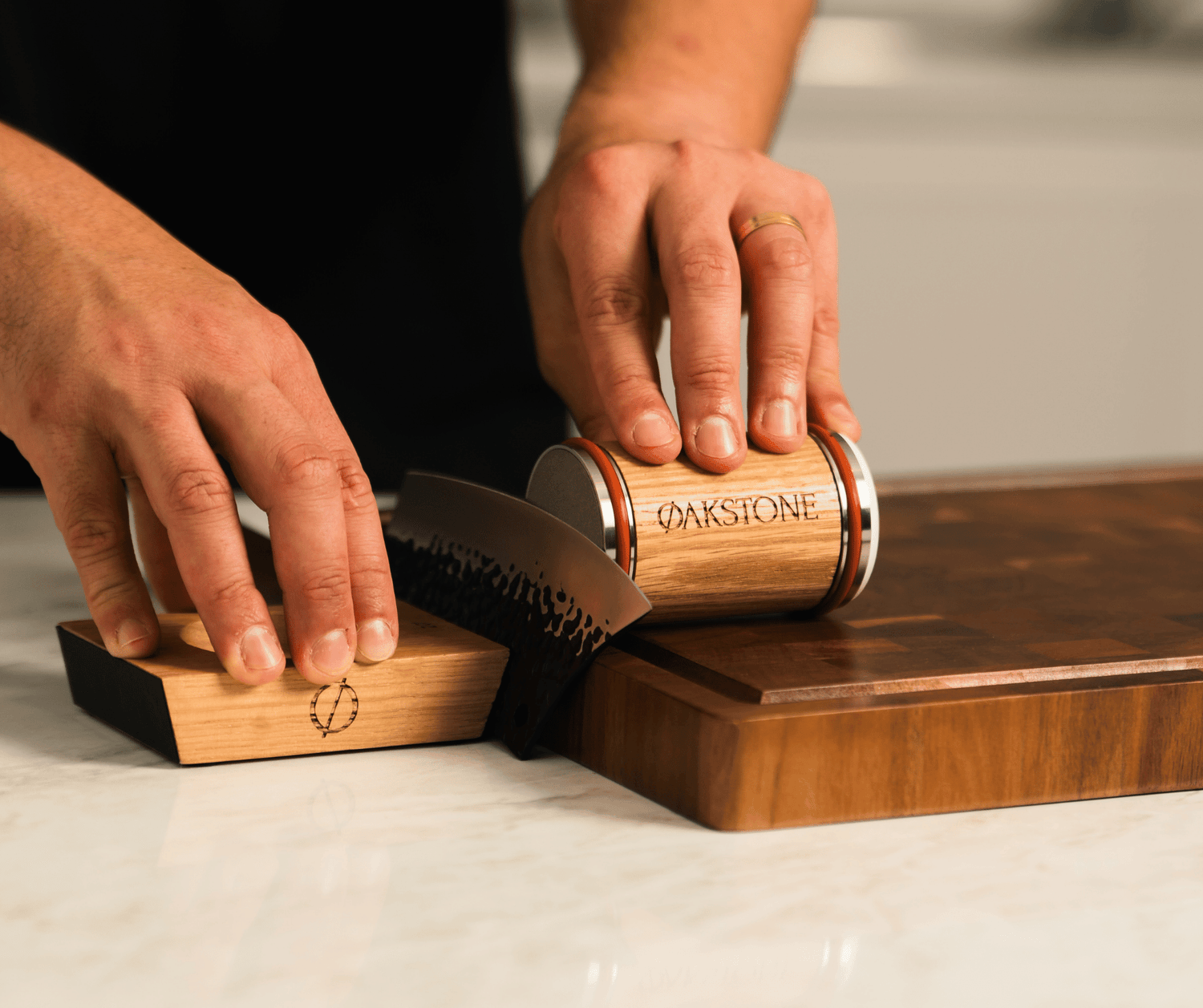Rolling Sharpener vs. Electric: Which is Better for the Australian Home Cook?
When it comes to moving beyond a basic honing steel, the modern home cook is faced with two popular choices for easy sharpening: the speed of an electric sharpener or the precision of a manual rolling sharpener. Both promise a sharp edge without the steep learning curve of a whetstone, but they achieve it in fundamentally different ways.
Choosing the right one isn't just about convenience; it's about the health and lifespan of your knives. This is an honest comparison to help you decide which method is right for your kitchen and your tools.

The Case for Electric Sharpeners: Speed and Simplicity
There’s no denying the primary appeal of an electric sharpener: it's incredibly fast. In just a few seconds, you can pull a dull knife through a series of motorised grinding wheels and get a serviceable edge.
Pros: They are fast, easy to use with almost no technique required, and can quickly restore a very dull blade.
Cons: This speed comes at a cost. Electric sharpeners are aggressive. They can remove a significant amount of metal, which will dramatically shorten the life of your knives. The high-speed grinding also generates heat, which can risk damaging the temper (the hardness) of a fine, thin blade. Finally, they offer no control and often have fixed angles that may not be suitable for your entire knife collection.

The Case for a Rolling Sharpener: Precision and Control
A premium rolling sharpener, like the Oakstone, represents a more modern, thoughtful approach to sharpening. It combines the precision of a guided angle with the control of a manual process.
Pros: It’s gentle on your knives, using a diamond abrasive to precisely grind a new edge with minimal steel removal. You are in complete control of the speed and pressure. It’s versatile, with our dual-angle 15° and 20° base catering to both robust European knives and fine Japanese blades. The process is a quiet, satisfying ritual, not a noisy, aggressive grinding session.
Cons: It takes a minute or two, rather than a few seconds. It requires a small amount of hands-on engagement, but this is what gives you the superior control and results.
The Verdict: Who is Each Sharpener Best For?
The choice comes down to your priorities and the knives you own.
An Electric Sharpener is best for the cook who values speed above all else, primarily uses inexpensive knives they aren’t worried about wearing down, and wants a purely functional, hands-off solution.
An Oakstone Rolling Sharpener is for the home cook who has invested in quality knives and wants to protect them for a lifetime. It’s for the person who enjoys the craft of cooking, finds satisfaction in caring for their tools, and wants professional-level precision without compromising on control.
For anyone who sees their knives as an investment, the gentle, precise, and controlled approach of a premium rolling sharpener is the clear winner.
Rarely on their primary knives. The lack of control and aggressive nature of most electric models are unsuitable for high-end blades. Professionals almost always prefer manual methods like whetstones or high-end guided systems for the precision they offer.
Most knife experts and premium knife manufacturers strongly advise against using aggressive electric sharpeners on hard, thin Japanese blades. The risk of removing too much metal or heat-damaging the delicate edge is too high.
It is more effective at creating a refined, durable, and precise edge. While an electric model might feel faster, the Oakstone sharpener creates a superior quality edge that is better for your knife's health and will last longer.
Not at all. The magnetic base holds the knife at the perfect angle for you. The only technique is a simple back-and-forth rolling motion. You'll achieve a perfect edge on your very first try.
Ready to Earn Your Edge?
Get Sharpening Secrets & Members-Only Perks
The insights you need to make smarter kitchen decisions.
Ready to Earn Your Edge?
Get Sharpening Secrets & Members-Only Perks





